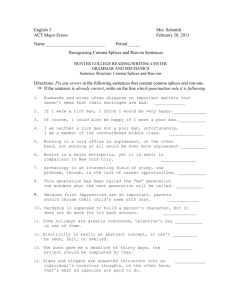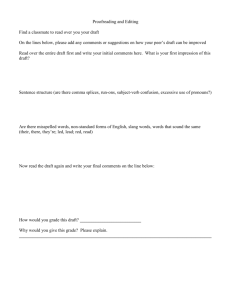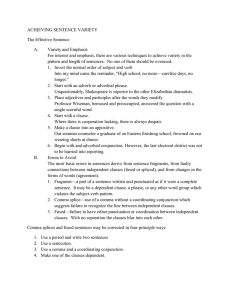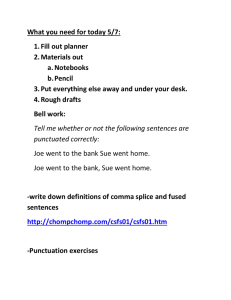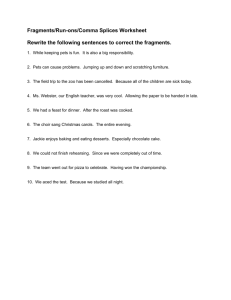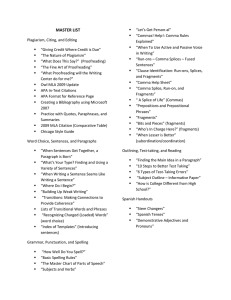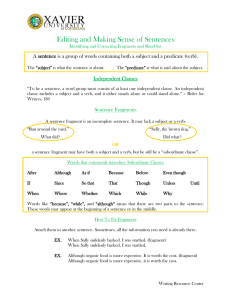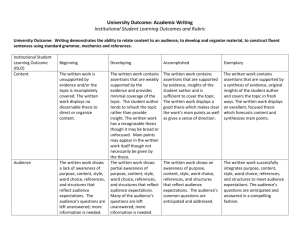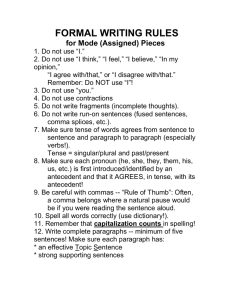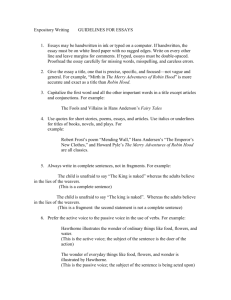Run-ons - Comma Splices - Fused Sentences
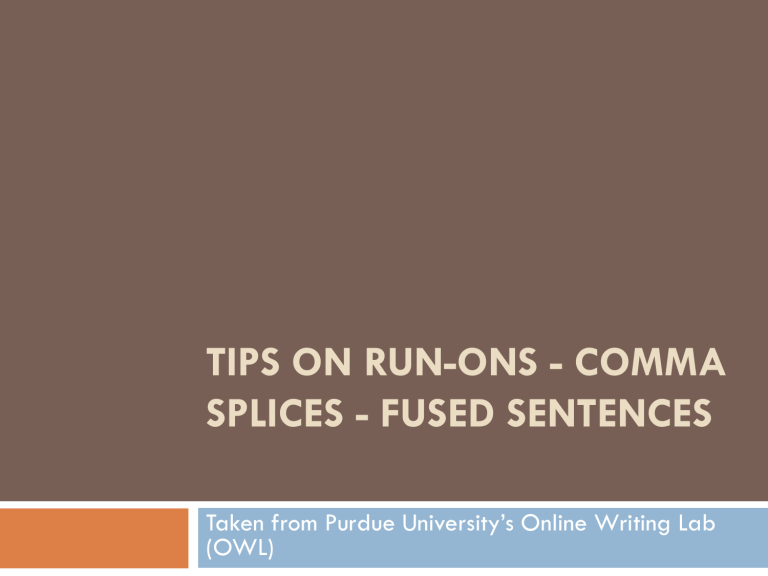
TIPS ON RUN-ONS - COMMA
SPLICES - FUSED SENTENCES
Taken from Purdue University’s Online Writing Lab
(OWL)
Run-ons - Comma Splices - Fused
Sentences
Run-ons, comma splices, and fused sentences are all names given to compound sentences that are not punctuated correctly. The best way to avoid such errors is to punctuate compound sentences correctly by using one or the other of these rules.
Coordinating Conjunctions
1. Join the two independent clauses with one of the coordinating conjunctions (and, but, for, or, nor, so, yet), and use a comma before the connecting word.
________________, and ________________.
He enjoys walking through the country, and he often goes backpacking on his vacations.
The Semicolon
2. When you do not have a connecting word (or when you use a connecting word other than and, but, for, or nor, so, or yet between the two independent clauses) use a semicolon (;).
_______________;________________.
He often watched TV when there were only reruns; she preferred to read instead.
Or
____________________; however,____________________.
He often watched TV when there were only reruns; however, she preferred to read instead.
Final Thoughts
So, run-ons and fused sentences are terms describing two independent clauses which are joined together with no connecting word or punctuation to separate the clauses.
Now you try:
Incorrect: They weren't dangerous criminals they were detectives in disguise.
Incorrect: I didn't know which job I wanted I was too confused to decide.
Solutions
Correct: They weren't dangerous criminals; they were detectives in disguise.
Correct: I didn't know which job I wanted, and I was too confused to decide.
